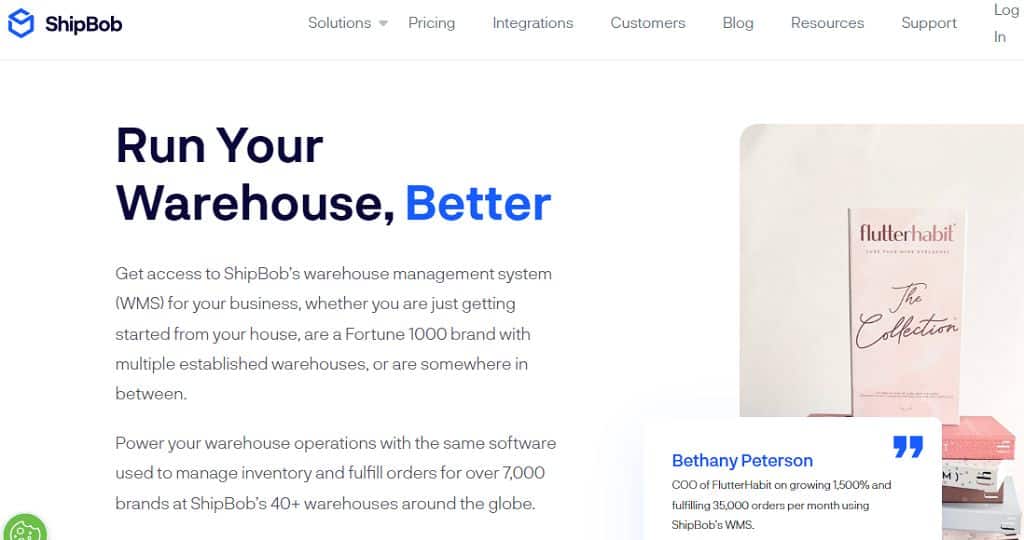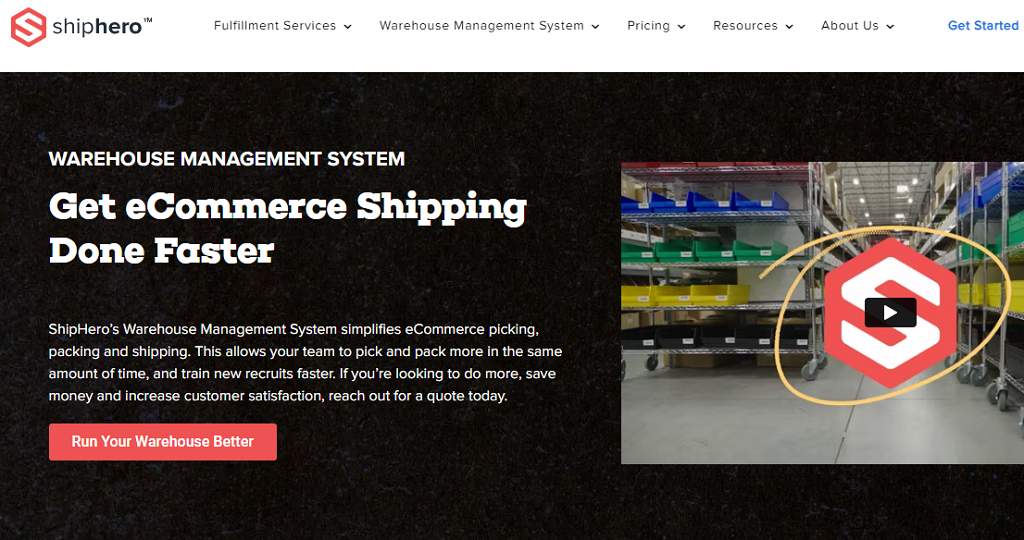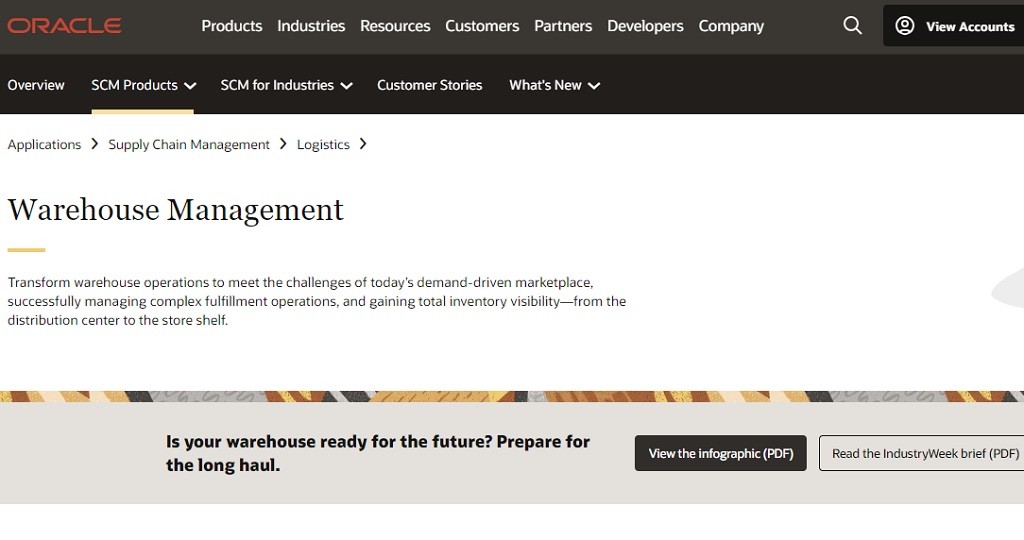Ecommerce warehouse management: how upgrading your setup can make you more competitive
We’re often so engrossed in developing quality products and successful marketing strategies that logistics might feel like an afterthought when it comes to the supply chain. It’s not as glamorous, we get it.
Yet, honing your ecommerce warehouse setup could be your secret ace in the competition.
Think of it this way: better logistics isn’t an indulgence – it’s a catalyst for success. Imagine swift, accurate order fulfillment, no more stock-out horror stories, and a smoother customer experience.
Sounds like a winning formula, right?
So, let’s delve in together. We’ll explore:
- The two critical aspects to consider when upgrading your warehouse operations
- The pros (and the not-to-be-ignored cons) of investing in warehouse advancements
- Practical options for warehouse upgrades, tailored for ecommerce businesses of all sizes (because whether you’re a rising star or an industry giant, there’s always room to level up)

What is ecommerce warehousing?
Let’s start with the basics.
Ecommerce warehousing is the beating heart of your supply chain and online retail operations.
It’s where your inventory lives, waiting to be shipped to eager customers. This physical or digital space (hello, dropshipping!) is dedicated to storing, tracking, and managing your products.
More than a simple storage unit, a well-oiled ecommerce warehouse is essential for fast, accurate order fulfilment. It’s the backbone of lean inventory management and the key to avoiding those dreaded ‘sold out’ notices.
Whether you’re handling it in-house or outsourcing, robust ecommerce warehousing ensures that every order ends with a happy customer.
So, give your ecommerce warehouse the attention it deserves – it’s a linchpin in your supply chain and ecommerce success story!
What is ecommerce warehouse management?
Now, let’s take a look at ecommerce warehouse management…
This is the system that coordinates inventory, order fulfillment, and shipping in your ecommerce business. Imagine it as the control tower, ensuring your products are stored efficiently, orders are accurately picked, packed, and dispatched, and stock levels are always up-to-date.
It’s vital for preventing those pesky ‘out of stock’ messages and guaranteeing customer satisfaction. Essentially, it’s what keeps your online shop’s back end ticking over nicely, letting you focus on growing your ecommerce business.
Ecommerce platform vs ecommerce warehouse management

In the ecommerce world, we have two main players: your ecommerce platform and your ecommerce warehouse management system. Both are fundamental, but they perform vastly different roles.
Your ecommerce store platform is like your shop’s window display. It’s the front-end part of your business – the slick website where customers browse and buy your products, and the dazzling marketing materials that draw them in.
It’s your customer’s first port of call, platforms like Shopify, Amazon, and Magento are prime examples. In fact, Shopify is an ideal example here, the platform’s fulfillment network is a 3PL (Third-party logistics), a paid service that takes care of all the logistics of storing, picking, packing, processing, and shipping your product inventory.
On the other side, we have the unsung hero – the ecommerce warehouse management system. This is the behind-the-scenes powerhouse managing all things supply chain, i.e. inventory, shipping, and order fulfillment.
Once a customer places an order through your ecommerce platform, it’s the ecommerce warehouse management system’s time to shine. Inventory management software like SkuVault takes over, ensuring that the right product is picked, packed, and dispatched.
So, while your ecommerce store platform might be the flashy, attention-grabbing front of your business, never underestimate the importance of a solid warehouse management system. It’s the reliable engine that keeps your ecommerce machine running smoothly and ensures your customers are always satisfied.
Benefits of upgrading your ecommerce warehouse management systems
So, we’ve established the two key elements that must be addressed to upgrade your ecommerce warehouse management systems.
But what are the potential benefits of investing in a better setup? We’ve taken a detailed look at just that for ecommerce businesses.
You lay the groundwork to scale
Let’s face it, every thriving ecommerce business reaches a crossroads: continue as a small-scale operation, or venture into bigger territories?
For those ready to take the leap, upgrading your ecommerce warehouse management setup becomes crucial.
Why? Scaling requires more hands on deck – imagine your employees navigating your inventory and processing orders. Outgrowing your spreadsheet-based inventory management is inevitable as you diversify into multiple sales channels, right?
Can you handle this surge on your own and still keep your customers smiling?
When it comes to scaling, a robust warehouse management system isn’t a luxury – it’s a must-have for managing growth and ensuring continued success.
You can better organize your products
Product organization matters more than you might think.
Traditional storage areas aren’t cut out for this task. A well-organized ecommerce warehouse, however, offers efficient foot traffic paths, dedicated processing stations, vertical product access, and distinct assembly areas.
Why does this matter? For ecommerce businesses, disorganization can lead to dreaded stock-outs, surprise storage shortages, incorrect shipments, and even lost products. And let’s not forget, these mishaps can seriously harm your customer experience.
Bottom line: proper organization isn’t just a warehouse best practice – it’s a strategy to prevent problems that could spell disaster for your ecommerce business.
You can access new markets and ship to them faster
Think of upgrading your ecommerce warehousing strategy as unlocking new possibilities.
With improved storage, packing, and processing efficiency, orders zoom out the door faster, leading to happier customers and more repeat business.
But it’s not just about speed – it’s also about reach. A solid ecommerce warehouse management strategy can open up entirely new markets for your business. Imagine reaching customers you never thought possible.
That’s the beauty of third-party logistics, which we’ll discuss next – it’s not just about making your current operations better, it’s about expanding your horizons.
You enhance accuracy and reduce errors
Upgraded your warehouse management systems can be your knight in shining armor when it comes to accuracy.
No more miscounted inventory, misplaced products, or mismanaged orders. These systems use advanced technologies to ensure every product is accurately accounted for and every order is fulfilled correctly.
The result? Fewer returns and complaints, and more satisfied customers. After all, nothing says ‘we value you’ to a customer more than a hassle-free shopping experience, right?
You gain valuable data and insights
Let’s not forget the power of data in your ecommerce journey.
A well-oiled warehouse management setup provides more than efficient operations – it gives you valuable insights into your business.
Track your best-selling products, identify bottlenecks in your fulfillment centers, and understand your inventory turnover better. These nuggets of information can inform strategic decisions, drive growth, and boost profitability.
In the age of information, data is power – and a smart warehouse setup puts this power right in your hands.
How do I know it’s time to upgrade my inventory management setup?

Wondering if it’s time to level up your warehouse game? Here are some key indicators:
Does your safety stock exceed your current location’s capacity?
Keeping ample safety stock is crucial for customer satisfaction.
But if your current location is bursting at the seams with products, it’s a sign you need more room to avoid those dreaded stock-outs. It might be time to think about multiple ecommerce warehouses and multiple locations.
Are you spending more than 75% of your working hours fulfilling orders?
If more than 75% of your workday is consumed by storing, processing, and shipping orders, it may be time to rethink.
As a business leader, your skills are best used in strategizing and setting goals – not packing boxes.
Do you feel disorganized or want separation between home and business?
A messy workspace can hamper productivity, focus, and mental clarity.
If your home is cluttered with business-related materials, blurring work-life boundaries, consider a dedicated space for your operations.
You’re witnessing considerable growth
Experiencing rapid growth, expanding your product range, exploring multiple sales channels, or even multiple warehouses?
While these are all great, these milestones can complicate your operations, signaling the need for a robust system. That’s where a solution like SkuVault comes in – centralizing your operations for smoother sailing.
Risks of not having ecommerce warehouse management
Let’s discuss some risks that come with ignoring an effective warehouse management systems…
1. Inventory inaccuracy
Lacking real-time tracking? Brace yourself for inventory discrepancies.
When physical stock and recorded inventory don’t align, it creates chaos. The risk of understocking can result in unfilled orders and frustrated customers. Overstocking, on the other hand, ties up your capital and leads to potential wastage.
Both scenarios are detrimental to your customer relationships and bottom line. Implementing an efficient warehouse management system keeps your inventory levels in check, preventing such headaches.
2. Inefficient order fulfillment
Without a streamlined warehouse system, your order fulfillment process could become a bottleneck.
Orders might be picked inaccurately, packed poorly, or shipped late, breeding inefficiencies and errors. These can cause unnecessary delays, triggering a chain reaction of dissatisfied customers and negative reviews.
A capable warehouse management system ensures that your fulfillment process is smooth and error-free, keeping your customers happy and your reputation intact.
3. Poor space utilization
Efficient space utilization is a cornerstone of successful ecommerce warehousing. Without a system to smartly allocate appropriate storage space based on item size, weight, and demand, you may waste valuable square footage.
This inefficiency can elevate your operational costs and hinder your ability to store more products. A reliable warehouse management system helps maximize space for storing inventory. This in turn will help you optimize your warehouse space and capacity, as well as reducing overhead costs.
4. Lack of visibility
Without visibility into your ecommerce warehousing operations, you’re navigating blindfolded.
You need real-time insights into order status, performance metrics, and operational trends to make informed decisions. A lack of visibility here hampers your ability to identify improvement areas, measure performance, and steer strategic decisions.
A well-implemented warehouse management system provides such crucial data, illuminating your operational landscape and guiding your decision-making process.
5. Increased costs
Inefficient operations don’t just delay processes – they also inflate costs. Poor picking routines can extend labor hours, while mismanaged store inventory can escalate carrying costs.
In the long run, these inefficiencies can put a significant dent in your finances. Incorporating a sound warehouse management system helps you streamline operations, reducing unnecessary expenses and boosting your profitability.
6. Subpar customer service
The culmination of all these issues reflects on your customer service.
Order delays, wrong shipments, and stockouts can tarnish your reputation and frustrate your customers. Unresolved, these issues can impact customer loyalty and your bottom line.
Implementing effective warehouse management systems mitigates these risks, ensuring top-notch service that keeps your customers coming back.
Our top 5 ecommerce warehouse management system picks
When it comes to selecting the right warehouse management software for your ecommerce business, you’re spoilt for choice.
Here, we have shortlisted the top 5 ecommerce warehouse management systems. Each of which we believe could significantly enhance your ecommerce warehousing practices and operations.
1. SkuVault Core
A cloud-based system, SkuVault Core helps businesses optimize their inventory control, reducing errors, and enhancing warehouse efficiency.
SkuVault’s user-friendly design means training your team won’t become an uphill battle, and its powerful integrations make it a versatile choice for even the most diverse ecommerce businesses.
Real-time quantity updates
SkuVault’s warehouse management system constantly syncs with your inventory data, providing accurate, up-to-the-minute stock quantities.
This feature helps prevent overselling and understocking, to optimize sales and ensure you can meet customer expectations.
Quality control capabilities
This feature allows rigorous inspection of products before they are dispatched. By ensuring only high-quality, correct items are sent out, SkuVault aids in reducing returns and boosting customer satisfaction.
Advanced reporting
SkuVault’s robust reporting tools provide insights into store inventory trends, sales performance, and warehouse efficiency. This data-driven approach supports strategic decision-making and fosters continual business improvement.
2. ShipBob

ShipBob, a tech-enabled third-party logistics provider (3PL), integrates seamlessly with ecommerce platforms to deliver fast, reliable order fulfillment.
ShipBob also offers transparent pricing, so businesses can plan their budget without hidden surprises.
Distributed inventory
This innovative feature allows businesses to split their inventory across ShipBob’s fulfillment centers.
In turn, this reduces shipping costs and delivery times by ensuring products are shipped from the closest center to the customer.
Returns management
ShipBob simplifies the returns process, providing a painless experience for both you and your customers.
A streamlined return system can enhance customer loyalty and encourage repeat purchases.
End-to-end tracking
This feature provides real-time tracking of orders from warehouse to customer, offering transparency and enabling quick and efficient issue resolution.
3. ShipHero

ShipHero caters to businesses across the scale spectrum, from fledgling start-ups to established enterprises.
Its comprehensive offering includes inventory and warehouse management and order fulfillment, providing an all-in-one solution.
ShipHero’s software simplifies batch picking, digital picking, and packing verification, reducing errors and streamlining operations.
Batch picking
ShipHero optimizes the order-picking process by grouping similar orders together.
This feature enhances warehouse efficiency by reducing the time spent on picking individual items.
Digital picking and packing verification
This feature reduces packing errors by digitally verifying each item before it’s packed.
Fewer errors mean fewer returns, greater customer satisfaction, and increased customer loyalty alongside profitability.
Detailed reporting
ShipHero’s comprehensive reports provide insights into all aspects of warehouse operations, helping identify bottlenecks and areas for improvement.
4. Oracle Warehouse Management

A powerhouse in the warehouse management systems field, Oracle Warehouse Management offers advanced inventory tracking and supply chain solutions.
The solution shines when it comes to integration capabilities, with seamless interfacing with various business software systems enhancing operational cohesion.
Additionally, the platform boasts superior scalability, allowing businesses to effectively manage growth without compromising on efficiency, making it a robust choice for both small enterprises and larger organizations alike.
Advanced inventory tracking
Oracle’s sophisticated system provides real-time tracking of inventory, offering accurate data on stock levels and location.
This supports effective inventory management and ensures product availability.
Cross-docking capabilities
This feature allows for the direct transfer of incoming goods to outbound gates, minimizing storage time.
Cross-docking can enhance warehouse efficiency and reduce storage costs.
Labor management
Oracle’s system assists in efficient labor allocation, ensuring that workforce skills and capacity are optimally utilized.
This can lead to improved productivity and reduced labor costs.
5. ShipHype Fulfilment

Seeking out comprehensive warehouse management software for small to medium-sized businesses? ShipHype Fulfilment handles everything from storage and packing to shipping and returns for your business.
It integrates seamlessly with popular ecommerce platforms, turning order fulfillment from a headache to a breeze. ShipHype is also an excellent choice for businesses looking to outsource their logistics while retaining control and visibility.
Inventory management
ShipHype provides an efficient system for managing inventory levels, helping prevent overstocking and stock-outs.
Effective inventory management supports business growth by ensuring product availability and reducing storage costs.
Custom packaging options
ShipHype allows businesses to offer custom packaging, adding a personalized touch to the customer experience.
This can enhance brand identity and customer loyalty.
Returns management
Similar to ShipBob, ShipHype’s returns management system provides a seamless return process, making it easier for you to handle returns and for customers to send items back.
This feature can significantly enhance the customer experience, instilling greater customer loyalty and more repeat purchases.
3 benefits of using SkuVault Core’s enhanced warehouse system
Now that you know about some of the general risks and benefits of ecommerce warehouse management systems, it’s time to look in detail at a particular solution – SkuVault Core.
1. Integration with critical technology
As your organization grows, your technology stack will grow as well. Think of all the systems required to keep your business humming:
- Point-of-sale
- Payment processors
- Your website
- Accounting software
- Channel management
If some of these are unfamiliar, that’s only because you haven’t had a need for them yet.
SkuVault acts as a one-stop shop for all your critical technology. We offer integrations with all major ecommerce and business software. That way, you don’t need to log in to two dozen back-ends and manually reconcile your critical data.
2. Easy barcode and SKU scanning systems
One of the easiest – and cheapest – things you can do to upgrade your ecommerce strategy is to create a barcode scanning system.
You can find a scanner for under one hundred dollars, and though this technology is over half a century old, it still works wonders for mitigating human error and staying organized.
While you can rig up a hacky barcode scanning directory in Excel or other programs, it’s much more scalable and clean to have your barcode system right within your warehouse management systems.
SkuVault’s innovative warehouse management software not only facilitates barcode and SKU scanning. In fact, it can also embed other critical metrics in your codes such as lot or group numbers.
3. More efficient order fulfillment
Visibility into your inventory numbers and inventory management happens in real time with SkuVault.
That means there’s no need to manually update spreadsheets or pull data on a weekly basis. In turn, this helps you make business decisions and fulfill orders much quicker.
SkuVault also generates digital or printable pick lists for your pickers – even if that’s only you. These pick lists include the most efficient route in your storage space to avoid backtracking or wasted time.
All of this equals faster order processing to meet customer demand quickly and efficiently.
Proper warehouse management is essential in the fast-paced world of ecommerce. Having the right tools can streamline operations and enhance customer satisfaction.
Ready to elevate your business? Book a personalized demo with SkuVault and discover the difference.
Ecommerce warehouse management FAQs
Q. What is ecommerce in warehouse management?
Ecommerce in warehouse management refers to the integration of online sales channels with warehousing operations. This ensures efficient storage, picking, packing, and shipping of products ordered online, facilitating timely deliveries to customers.
Q. How to build an ecommerce warehouse?
To build an e-commerce warehouse:
1. Assess your product range and inventory needs.
2. Choose a strategic location close to suppliers or customers.
3. Design the layout for efficient product flow.
4. Utilise inventory management software and implement systems.
5. Equip with necessary tools and technologies for picking, packing, and shipping.
6. Train staff in e-commerce operations and customer service.
Q. What is e-logistics for warehouse management?
E-logistics for ecommerce warehouse management refers to the digital solutions and tools used to optimize the movement and storage of goods within a warehouse. It often includes systems for tracking inventory, optimizing routes, automating order processing, and ensuring seamless coordination between online sales and physical inventory management. Essentially it is an online hub where you can manage and control warehouse operations from.

